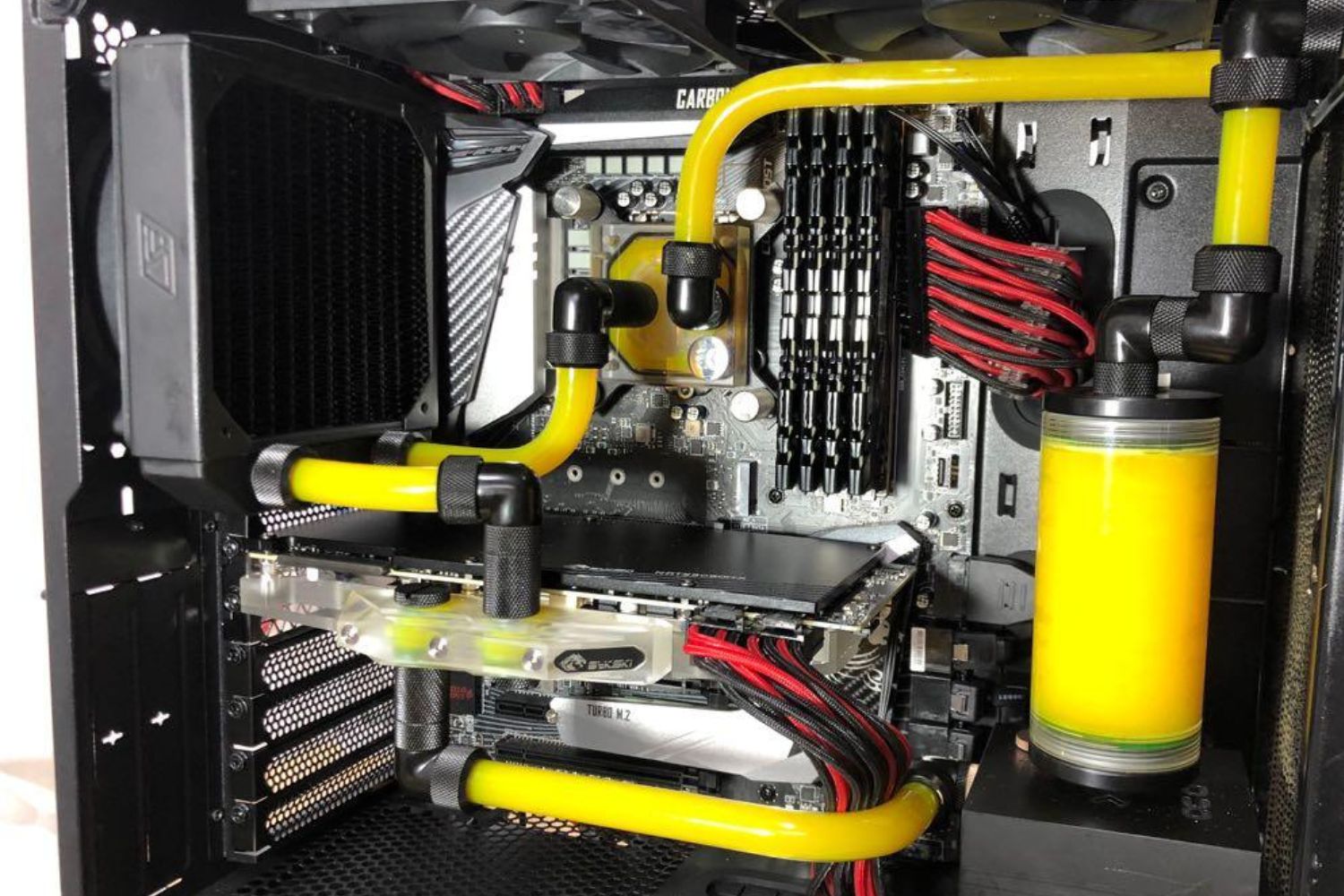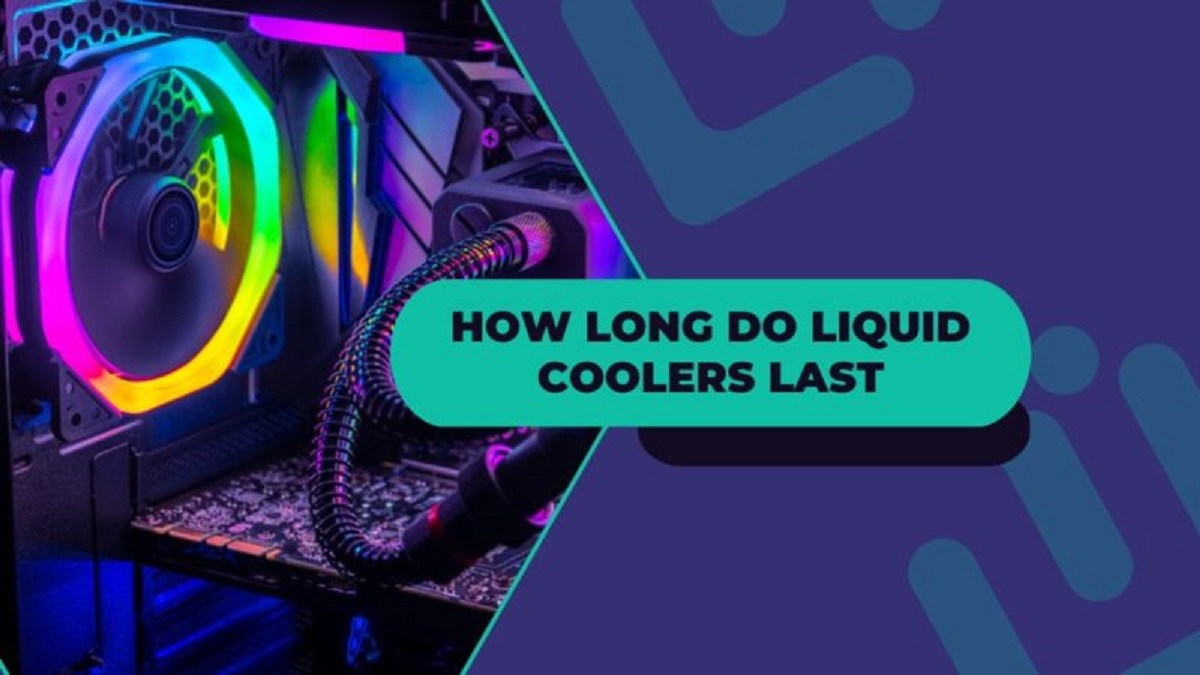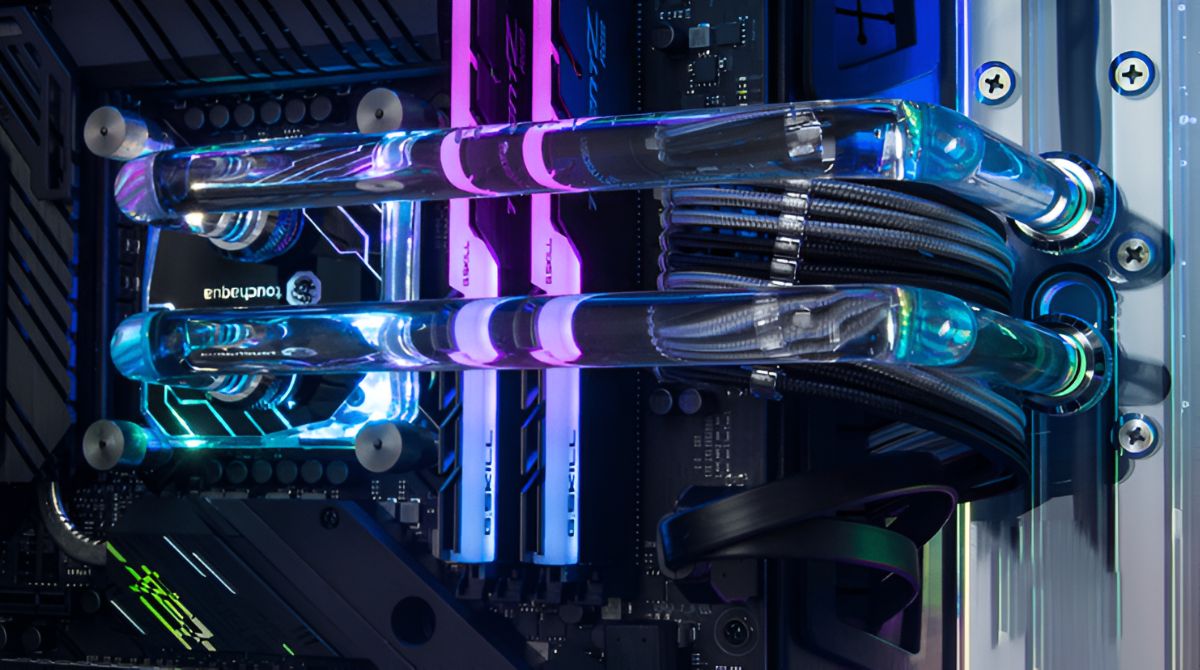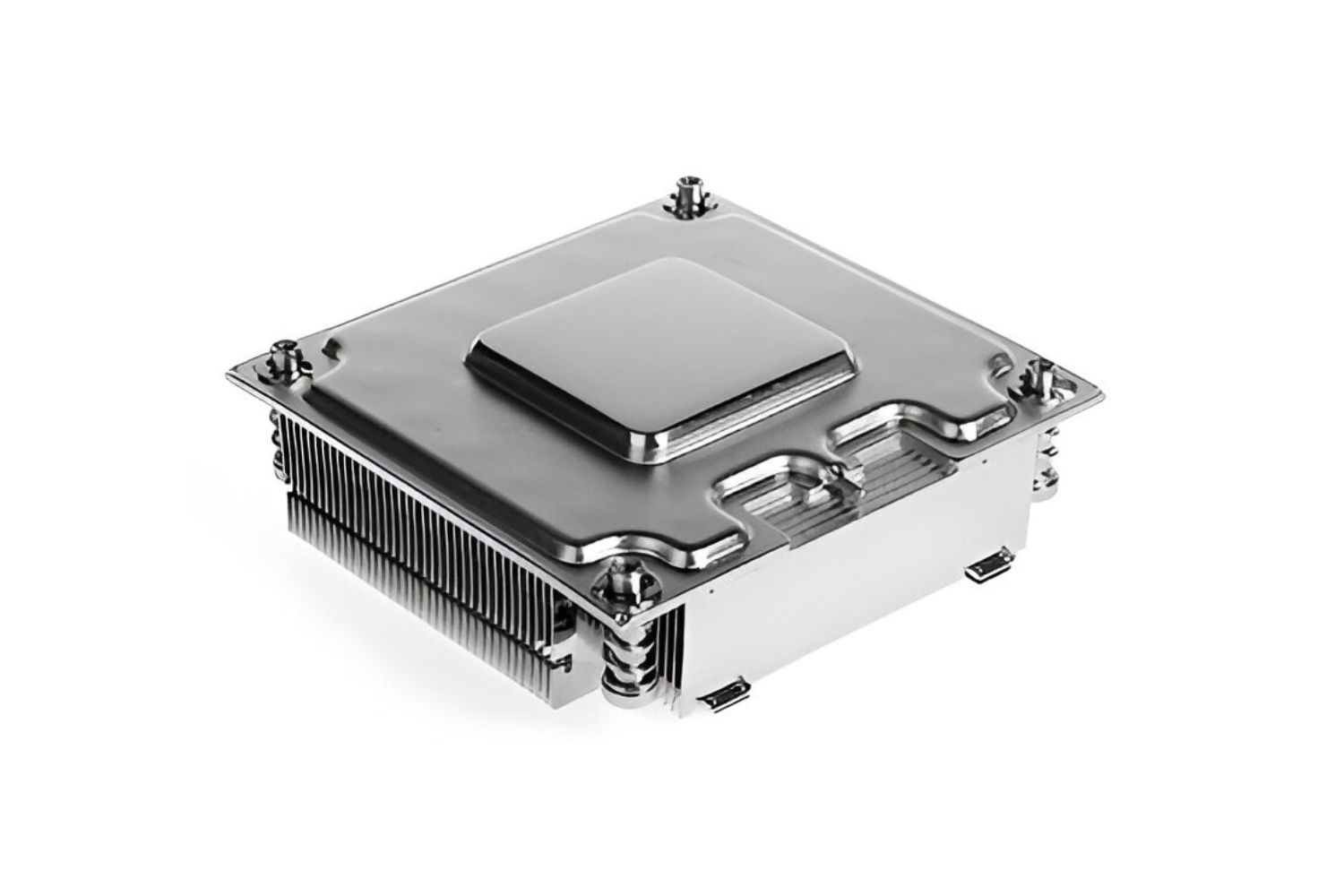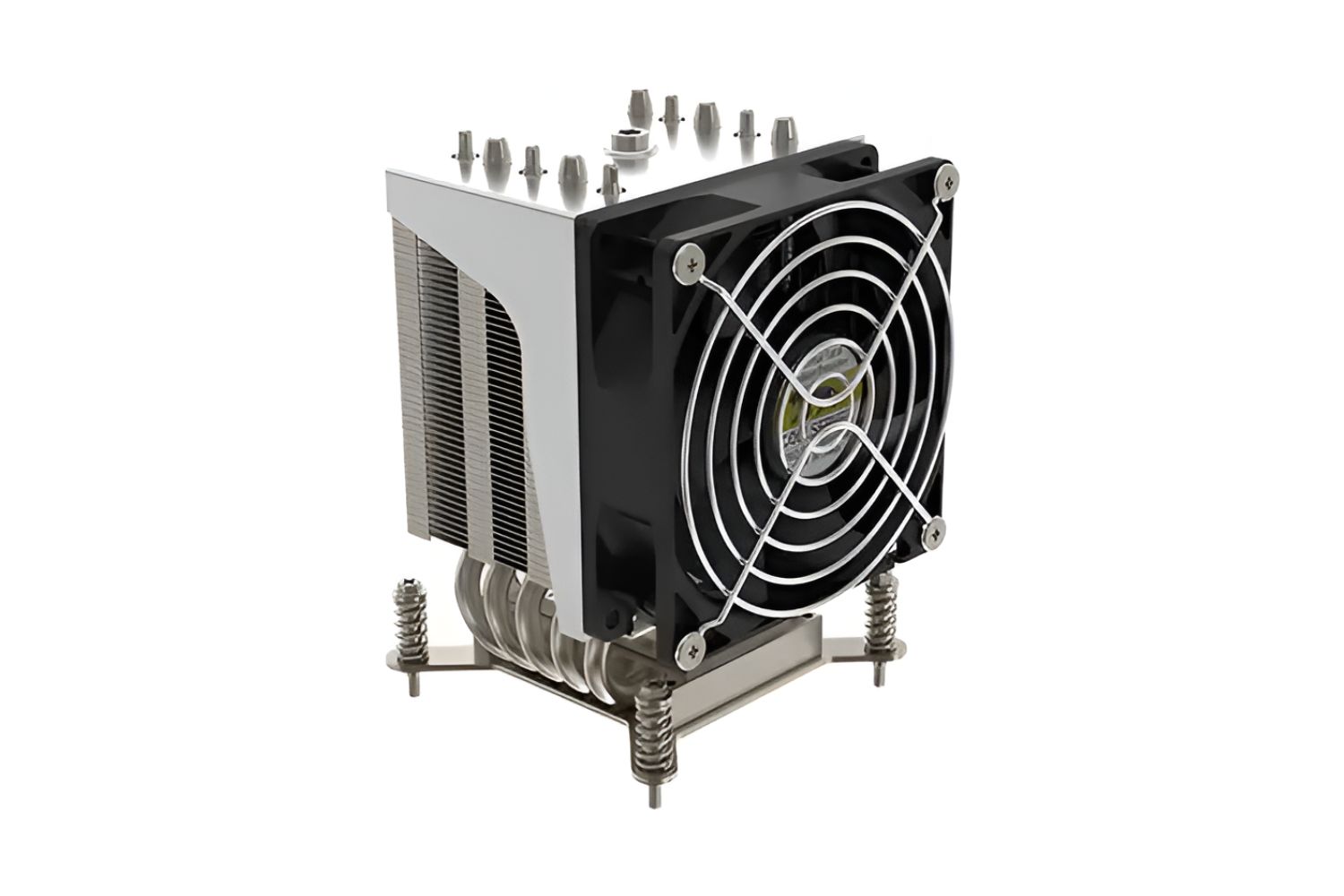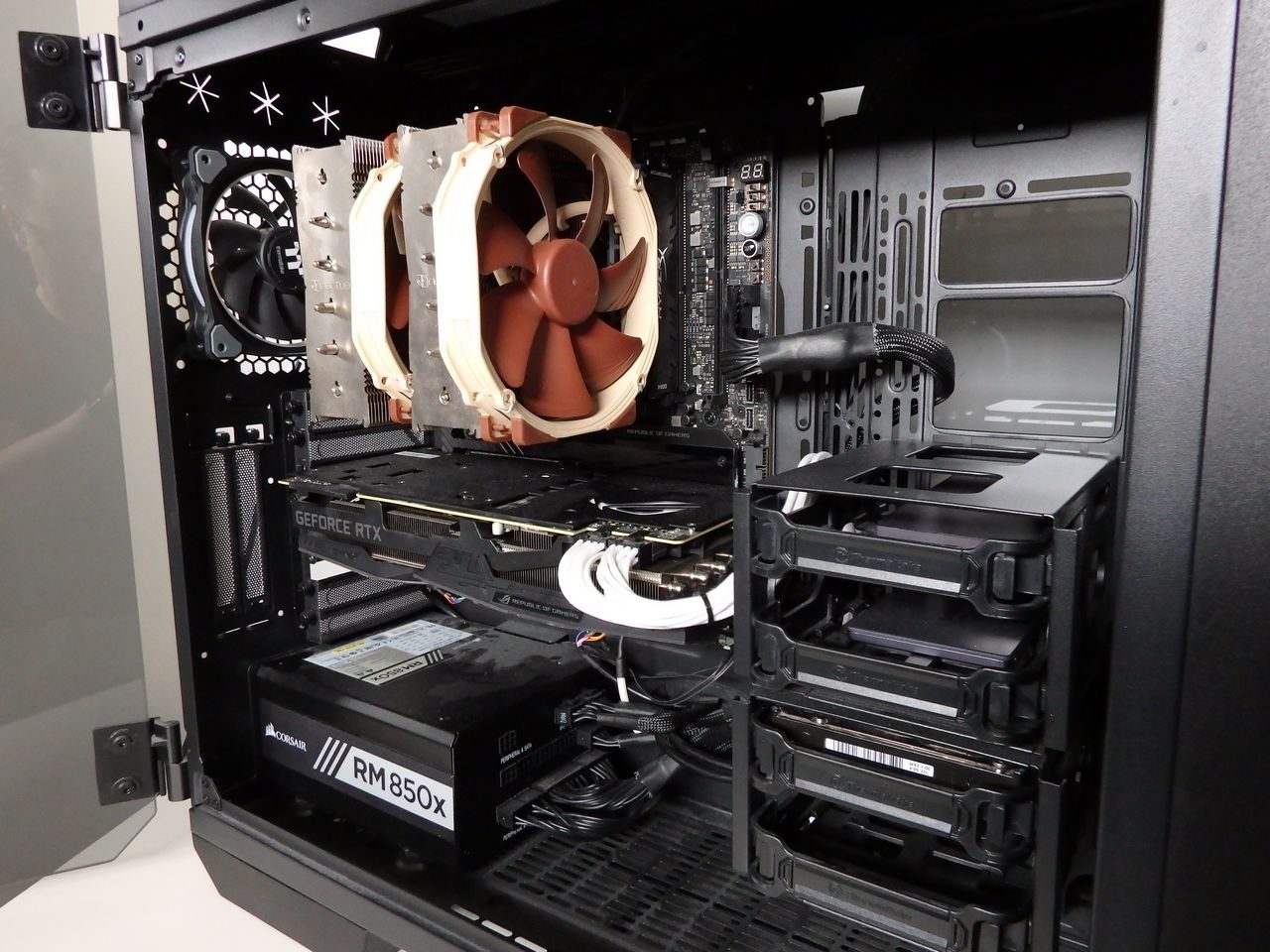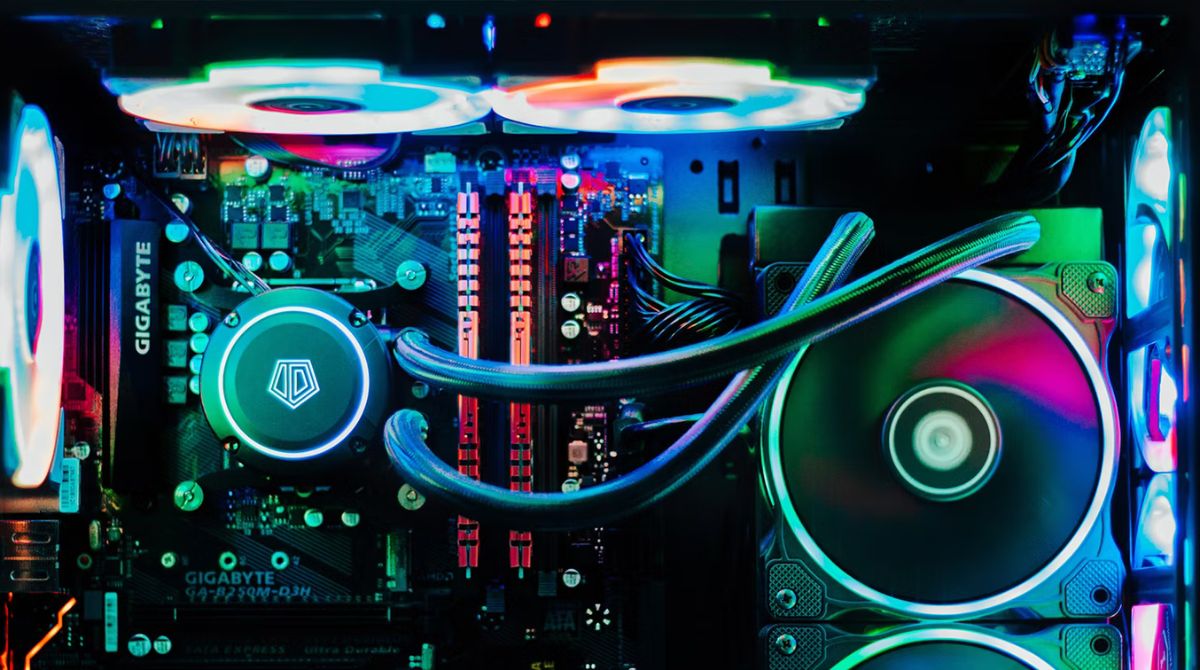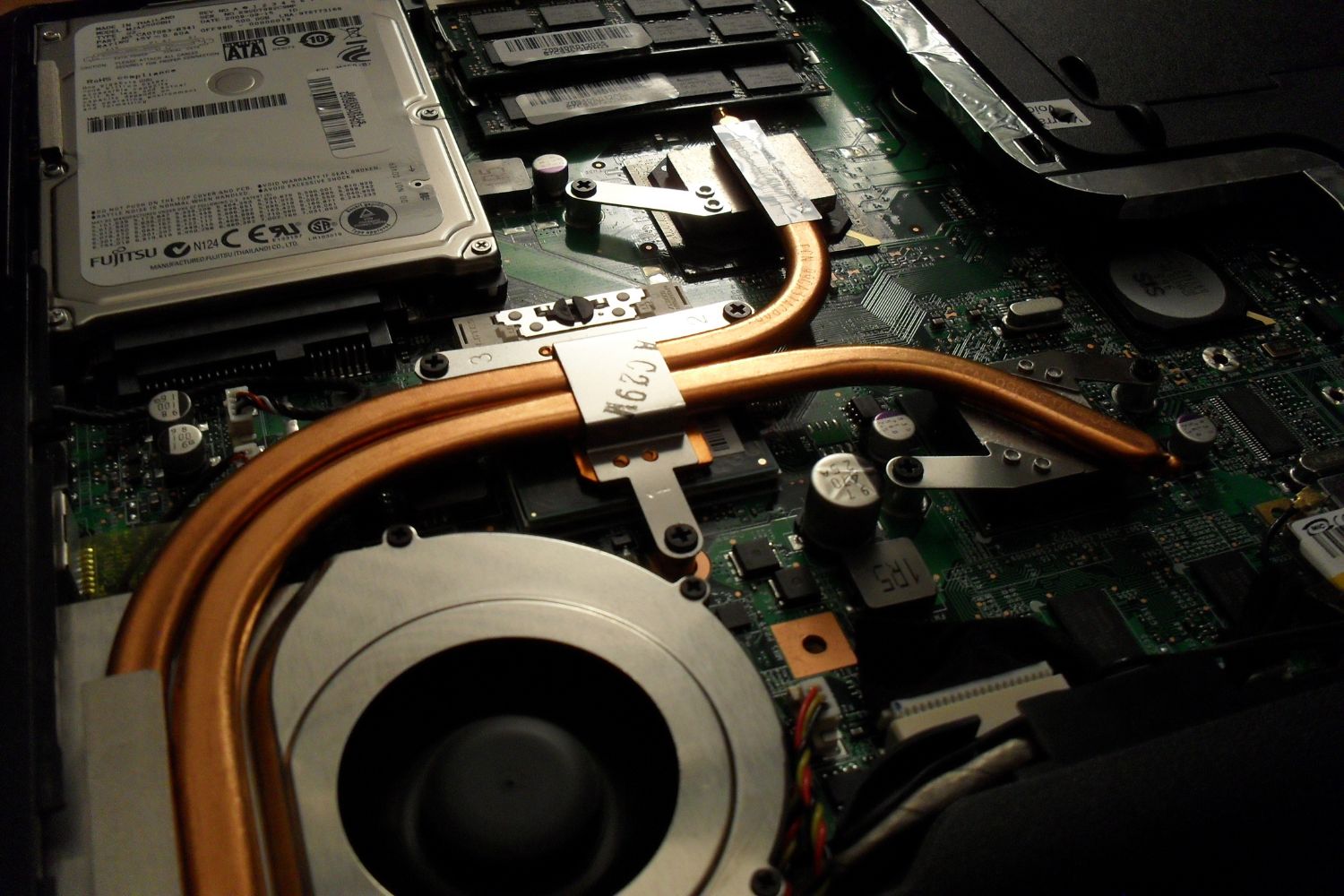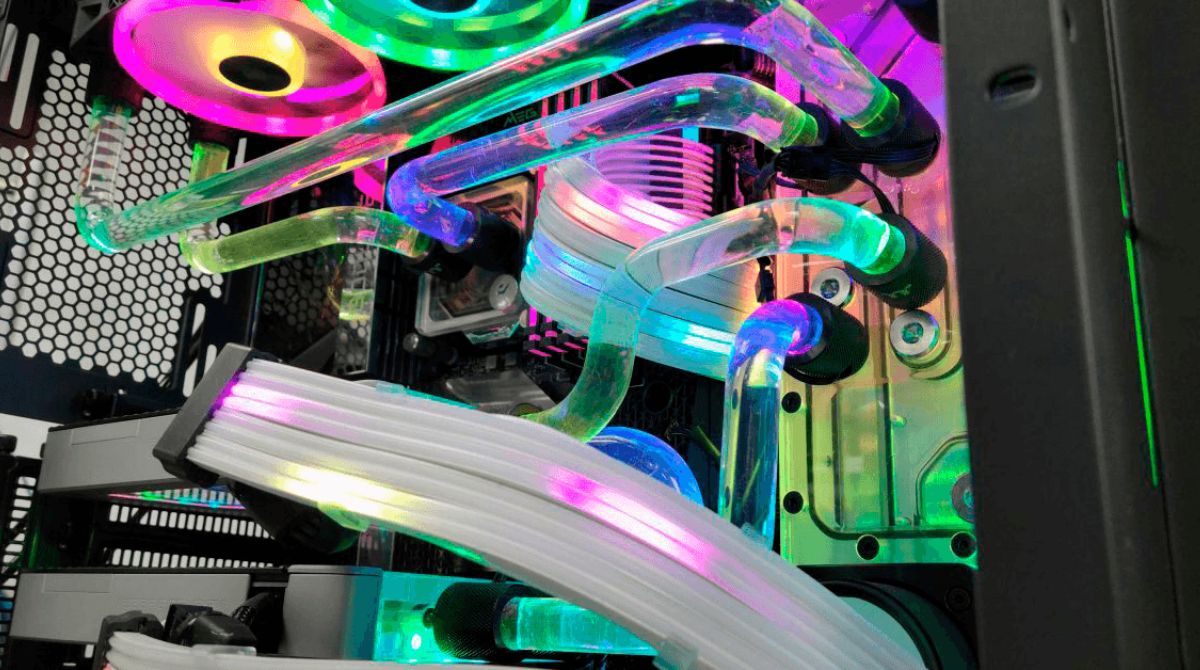Introduction
Welcome to the world of liquid CPU coolers, where performance optimization and temperature control go hand in hand. If you’re unfamiliar with liquid CPU coolers, allow me to provide a brief introduction. These coolers, also known as AIO (All-in-One) coolers, are designed to keep your CPU running at optimal temperatures by using a liquid coolant to dissipate heat more efficiently than traditional air coolers.
Maintaining your liquid CPU cooler is crucial for ensuring its longevity and effectiveness. Just like any other component in your computer, it requires periodic maintenance to perform optimally. However, one common question that arises is: how often should you change your liquid CPU cooler?
In this article, we will dive into the importance of liquid CPU cooler maintenance, explore the factors that influence the frequency of cooler changes, and provide a general guideline to follow. Additionally, we will discuss the signs that indicate it’s time for a replacement and share some maintenance tips to extend the lifespan of your liquid CPU cooler.
So, whether you’re a seasoned PC enthusiast or a newbie exploring the world of liquid CPU coolers, read on to discover the secrets of maintaining your CPU cooler for optimal performance and longevity.
Importance of Liquid CPU Cooler Maintenance
Maintenance is an essential aspect of owning a liquid CPU cooler. Neglecting proper maintenance can lead to various issues, including reduced cooling efficiency, increased noise levels, and even hardware damage. Let’s explore why maintaining your liquid CPU cooler is so critical.
Efficient Heat Dissipation: Liquid CPU coolers excel at dissipating heat efficiently, ensuring that your processor stays within the acceptable temperature range. However, over time, the coolant inside the cooler can become contaminated with dust, debris, and other impurities. This buildup can hinder the cooler’s ability to transfer heat effectively, causing your CPU to overheat. Regular maintenance, such as cleaning the radiator and the cooling block, ensures optimal heat dissipation.
Prolonged Lifespan: Components that operate at high temperatures are prone to degradation and shortened lifespans. By maintaining your liquid CPU cooler, you can prevent excessive heat from damaging your CPU and other sensitive components. Regular maintenance helps to keep temperatures in check, reducing the risk of premature failure and extending the lifespan of your hardware.
Noise Reduction: Liquid CPU coolers are known for their quiet operation. However, as dust accumulates in the cooling fins and fans, it can disrupt the smooth airflow, leading to increased noise output. Proper maintenance, including regular cleaning and dust removal, ensures that your liquid cooler continues to operate silently, providing you with a peaceful computing experience.
Hassle-Free Overclocking: Overclocking your CPU can provide a significant performance boost, but it also generates additional heat. Liquid CPU coolers are particularly effective at managing the extra heat generated during overclocking, ensuring that your CPU remains stable and reliable. Regular maintenance of your liquid cooler allows you to safely push the boundaries of your CPU’s performance without worrying about excessive temperatures.
Preventing System Damage: Excessive heat is a major contributor to hardware failure. If your liquid CPU cooler fails to keep temperatures under control, it can lead to irreversible damage to your CPU and other components. Consistent maintenance, such as checking for leaks, inspecting hoses and fittings, and replacing worn-out parts, prevents potential disasters and safeguards your valuable hardware investment.
Overall Performance and Stability: By maintaining your liquid CPU cooler, you ensure that your system operates at its full potential. By preventing overheating, you minimize thermal throttling, a process where the CPU reduces its performance to prevent damage. This results in a more stable and responsive system, allowing you to work or game without interruptions or slowdowns.
Now that we understand the importance of liquid CPU cooler maintenance, let’s delve into the factors that influence how often you should consider changing your liquid cooler.
Factors to Consider When Determining How Often to Change Liquid CPU Cooler
Deciding when to change your liquid CPU cooler depends on several factors that can influence its performance and lifespan. Here are the key factors to consider:
Manufacturer’s Recommendations: The manufacturer of your liquid CPU cooler may provide specific guidelines regarding the lifespan of their product. It’s essential to consult the documentation or visit their website to understand their recommendations. Following their guidelines can help you determine when it’s best to replace your cooler.
Cooler Quality: The quality of your liquid CPU cooler plays a significant role in how long it will remain effective. Higher-quality coolers often come with better components, sturdier construction, and more efficient cooling capabilities. They generally have longer lifespans compared to lower-quality options.
Usage and Workloads: The intensity of your computer usage and the type of workloads you regularly subject your CPU to can impact the lifespan of your liquid cooler. If you mainly use your computer for light tasks such as web browsing and word processing, it may not put too much strain on your cooler. However, if you frequently engage in resource-intensive activities like gaming, content creation, or video editing, your CPU will generate more heat, requiring more frequent cooler replacements.
Dust and Environmental Conditions: Dust accumulation is a common issue that affects the performance of all coolers, including liquid CPU coolers. The amount of dust present in your environment and how well you manage it can influence the lifespan of your cooler. If you live in a dusty environment, regularly cleaning and maintaining your cooler is crucial to ensure optimal performance.
Overclocking: Overclocking your CPU, while providing a performance boost, increases the heat output significantly. If you frequently engage in overclocking, you may need to replace your liquid CPU cooler more often to compensate for the increased heat and stress on the components.
Preventive Maintenance: Regular and proper maintenance can significantly extend the lifespan of your liquid CPU cooler. Cleaning the radiator, fans, and other components, as well as checking for leaks and replacing worn-out parts, can keep your cooler functioning optimally and delay the need for replacement.
While these factors provide a general guideline, it’s important to monitor the performance and temperature of your CPU regularly. If you start experiencing any symptoms of an inefficient cooler or notice significantly higher temperatures than usual, it may indicate that it’s time to consider replacing your liquid CPU cooler.
In the next section, we’ll provide a general guideline for how often you should change your liquid CPU cooler to ensure the best performance and longevity.
A General Guideline: How Often to Change Liquid CPU Cooler
While there is no one-size-fits-all answer to how often you should change your liquid CPU cooler, there are some general guidelines you can follow. Keep in mind that these are rough estimates, and your specific situation may vary.
1. Every 3-5 Years: On average, a well-maintained liquid CPU cooler can last between 3 to 5 years. This estimate assumes regular usage and proper maintenance. However, if you notice a decline in cooling performance, increased noise levels, or higher CPU temperatures, it may be a sign that your cooler needs replacing before the 3-year mark.
2. With Component Upgrades: When upgrading other components in your computer, such as the CPU or motherboard, it’s a good idea to consider replacing the liquid CPU cooler as well, especially if the new components generate more heat or require a different socket type. This ensures compatibility and optimal cooling performance for your upgraded system.
3. When Performance Declines: If you notice that your liquid CPU cooler is no longer providing adequate cooling, resulting in higher CPU temperatures and potential performance throttling, it’s time to consider changing it. Aging coolers may experience pump failure, coolant evaporation, or degrade performance due to the accumulation of dust and debris. Monitoring CPU temperatures regularly can help you detect any cooling issues.
4. Leaks or Physical Damage: Any signs of leaks or physical damage to your liquid CPU cooler should not be ignored. Leaks can lead to catastrophic damage to your computer, potentially ruining other components. If you notice leaks, cracks, or any other physical damage, it’s crucial to replace the cooler immediately to prevent further issues.
5. If It’s No Longer Compatible: As technology evolves, so do CPU sockets and mounting mechanisms. If you upgrade your CPU or motherboard to a newer generation that uses a different socket or mounting solution, you may need to change your liquid CPU cooler to ensure compatibility and proper cooling performance.
Remember, these guidelines are not set in stone, and other factors, such as the quality of your cooler, environmental conditions, and workload demands, can influence how often you should change your liquid CPU cooler. Regularly monitoring your system’s temperature and health, performing preventive maintenance, and staying aware of any performance issues will help you determine when it’s time for a cooler replacement.
In the next section, we’ll discuss some telltale signs that indicate it’s time to change your liquid CPU cooler.
Signs That Indicate It’s Time to Change Your Liquid CPU Cooler
Knowing when to change your liquid CPU cooler is crucial to prevent potential hardware damage and ensure optimal cooling performance. Look out for the following signs that may indicate it’s time for a cooler replacement:
1. Higher CPU Temperatures: If you notice a significant increase in CPU temperatures during normal usage or under heavy workloads, it’s an indication that your liquid CPU cooler may no longer be able to effectively dissipate heat. Higher temperatures can lead to performance degradation, system instability, and potential damage to your CPU.
2. Intense Fan Noise or Grinding Sounds: Unusual or excessively loud fan noise can be a sign that your liquid CPU cooler is struggling to cool the CPU efficiently. Grinding or rattling sounds may indicate a problem with the fans or the pump, suggesting potential mechanical failure.
3. Pump Failure: If the pump of your liquid CPU cooler stops working or becomes unreliable, it’s a clear sign that a replacement is necessary. The pump is responsible for circulating the coolant and ensuring proper heat transfer. Without an operational pump, the cooler will not be able to function as intended.
4. Visible Leaks or Cracks: Any signs of leakage, whether from the hoses, fittings, or radiator, should not be ignored. Leaks can lead to irreparable damage to your computer components, and immediate replacement of the cooler is crucial to prevent further issues and protect your hardware investment.
5. Accumulation of Dust and Debris: Over time, dust and debris can build up in the radiator and cooling fins of your liquid CPU cooler, hindering its ability to dissipate heat effectively. If you notice excessive dust or debris accumulation despite regular cleaning, it may indicate that the cooler is reaching the end of its lifespan and needs to be replaced.
6. Incompatibility with Upgraded Components: If you upgrade your CPU or motherboard to a newer generation that requires a different socket or mounting mechanism, your current liquid CPU cooler may no longer be compatible. It’s essential to ensure that your cooler supports the new components to avoid any compatibility issues.
7. Aging and Warranty Expiration: Liquid CPU coolers, like any other electronic device, have a limited lifespan. If your cooler is approaching the end of its warranty period or is over 3-5 years old, it may be wise to consider a replacement. Aging components are more prone to failure and may not provide the same cooling performance as newer models.
By keeping an eye out for these signs, you can determine the right time to replace your liquid CPU cooler and avoid potential system overheating and hardware damage.
Next, we’ll explore maintenance tips that can help prolong the lifespan of your liquid CPU cooler.
Maintenance Tips to Prolong the Lifespan of Your Liquid CPU Cooler
Regular maintenance is essential for preserving the performance and lifespan of your liquid CPU cooler. By following these maintenance tips, you can ensure that your cooler operates optimally and lasts for years to come:
1. Regular Cleaning: Dust and debris can accumulate in the radiator and cooling fins, obstructing airflow and diminishing cooling performance. To prevent this, periodically clean the radiator and fans using compressed air or a soft brush. Be gentle while cleaning to avoid damaging any delicate components.
2. Inspect for Leaks or Damage: Routinely check your liquid CPU cooler for any signs of leaks, such as moisture or staining around the fittings or hoses. Additionally, inspect for any physical damage, such as cracks or corrosion. If you notice any leaks or damage, it’s crucial to address them immediately to prevent further complications.
3. Replace Worn-out or Faulty Parts: Over time, certain components of your liquid CPU cooler, such as the fans or pump, may wear out or become faulty. If you notice any issues with these elements, consider replacing them with new ones to ensure the continued efficient operation of your cooler.
4. Monitor CPU Temperatures: Keep an eye on your CPU temperatures using software monitoring tools. High temperatures could indicate a problem with your liquid CPU cooler. If you notice any unusual spikes or consistently high temperatures, investigate the cause and take appropriate action, such as cleaning the radiator or considering a cooler replacement.
5. Maintain a Dust-free Environment: Minimize the amount of dust entering your computer case by utilizing dust filters on intake fans and regularly cleaning your workspace. A clean environment helps reduce dust buildup within your liquid CPU cooler and other components, improving overall cooling performance and preventing clogs.
6. Avoid Excessive Overclocking: While overclocking can provide a performance boost, it also generates additional heat, placing greater stress on your liquid CPU cooler. Avoid pushing your CPU to extreme overclocking settings for extended periods, as it can shorten the lifespan of both the CPU and cooler. Opt for conservative overclocking settings that do not strain the cooler excessively.
7. Follow Manufacturer’s Guidelines: Consult the manufacturer’s documentation for specific maintenance instructions and recommended intervals for cleaning and replacing parts. Each liquid CPU cooler may have its unique requirements, so it’s important to adhere to the manufacturer’s guidelines to maximize the performance and lifespan of your cooler.
By incorporating these maintenance tips into your routine, you can ensure your liquid CPU cooler remains in optimal condition, provides efficient cooling performance, and extends its overall lifespan.
In the next section, we will conclude our discussion on liquid CPU cooler maintenance and its importance.
Conclusion
Maintaining your liquid CPU cooler is crucial for ensuring optimal performance, prolonging its lifespan, and safeguarding your valuable computer components. By following the guidelines discussed in this article, you can make informed decisions about when to change your liquid CPU cooler and how to prolong its lifespan.
Regular maintenance, such as cleaning the radiator, inspecting for leaks, and replacing worn-out parts, is essential to keep your liquid CPU cooler functioning optimally. By removing dust and debris, monitoring CPU temperatures, and maintaining a dust-free environment, you can prevent issues like reduced cooling efficiency, increased noise levels, and potential hardware damage.
Understanding the factors that influence how often to change your liquid CPU cooler, such as manufacturer recommendations, usage patterns, and environmental conditions, can help you make informed decisions about replacement intervals. If you notice signs like higher CPU temperatures, noise, leaks, or incompatibility with upgraded components, it’s a clear indication that it’s time to consider a replacement.
By proactively maintaining your liquid CPU cooler and recognizing the signs of a deteriorating cooler, you can avoid potential overheating issues, performance degradation, and hardware failures. In doing so, you’ll ensure your computer runs smoothly, quietly, and efficiently.
So, remember to stay vigilant, perform regular maintenance, and be proactive in replacing your liquid CPU cooler when necessary. By doing so, you’ll maximize the performance, longevity, and overall satisfaction of your computer system.







